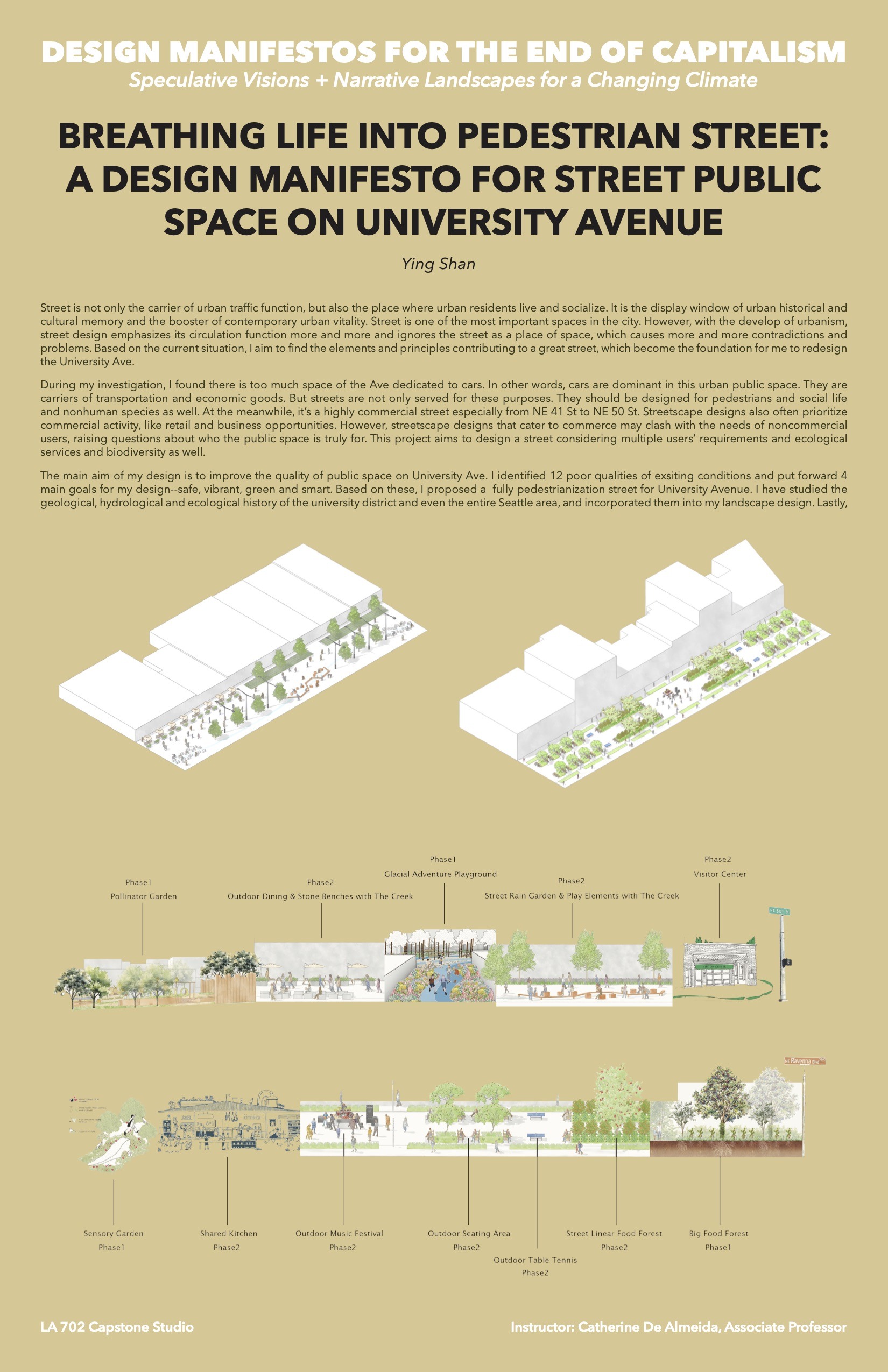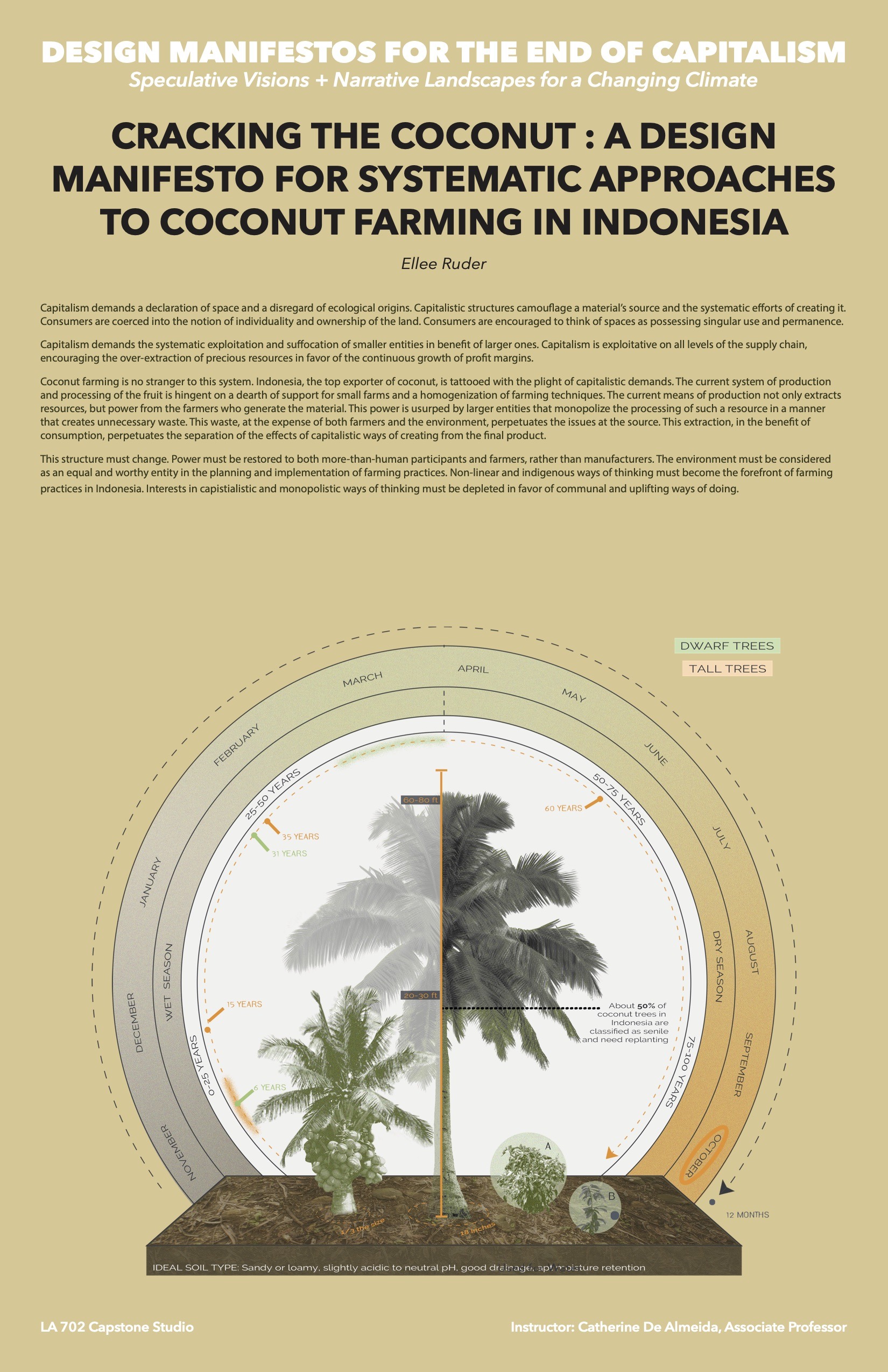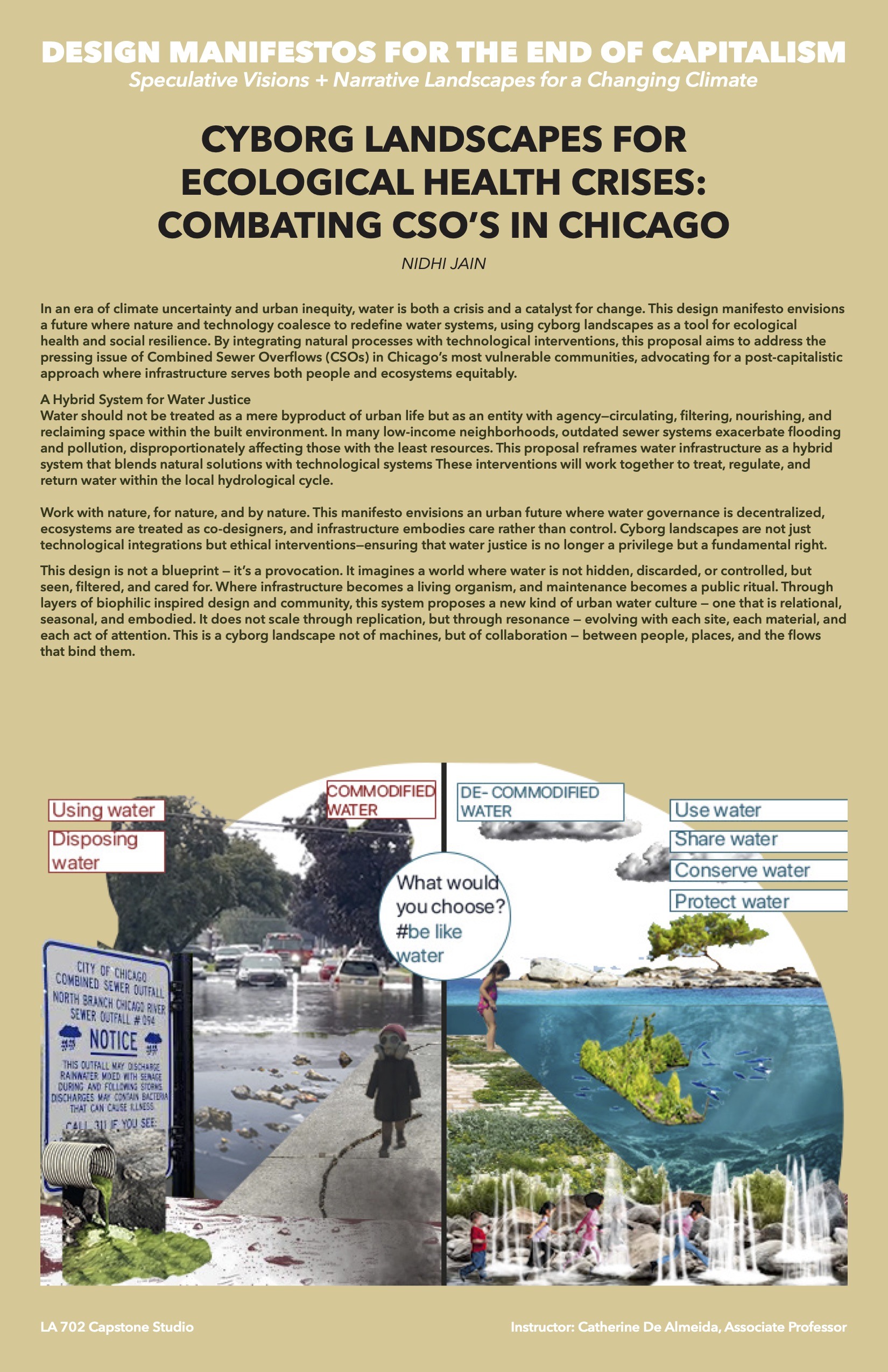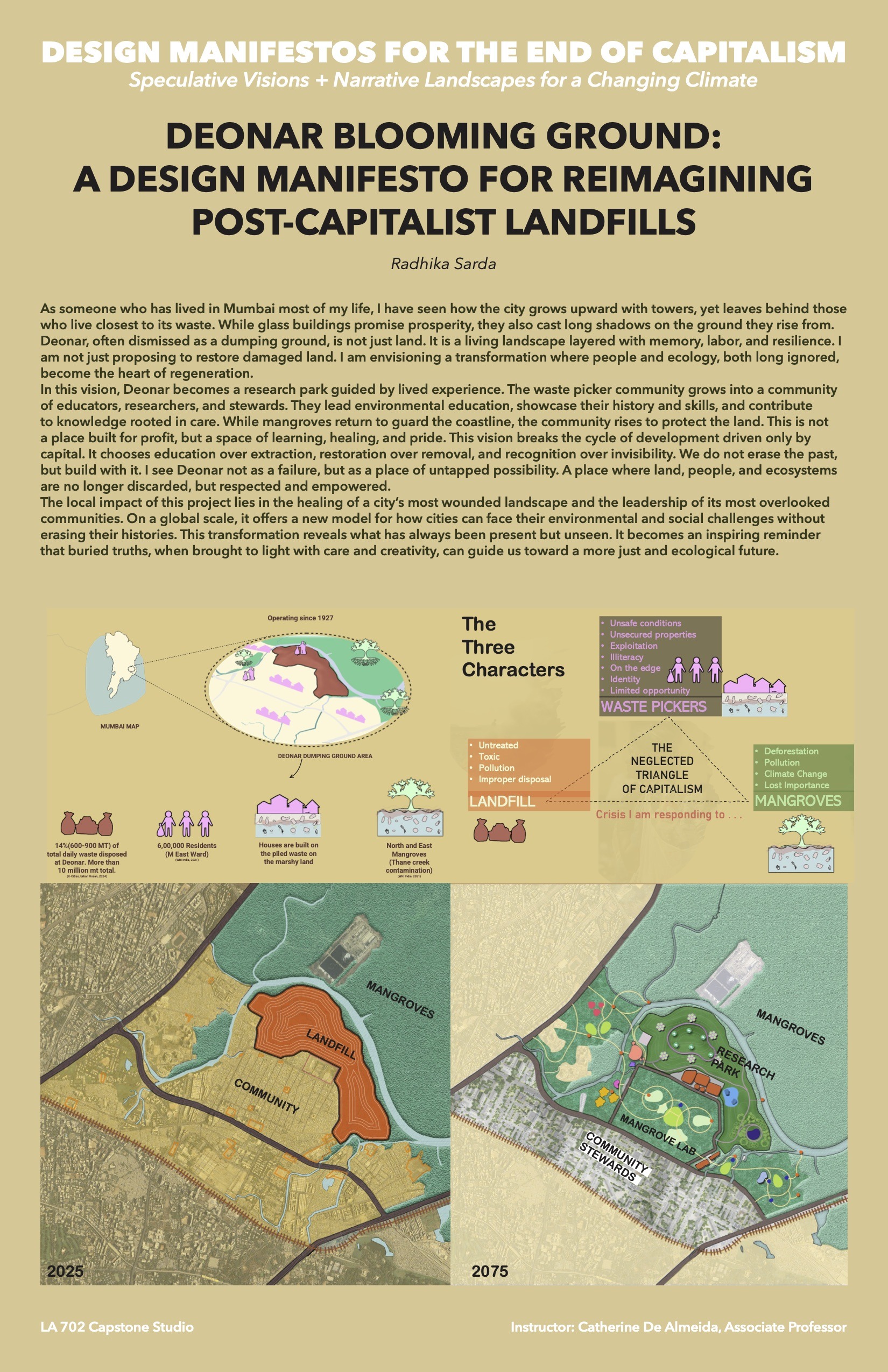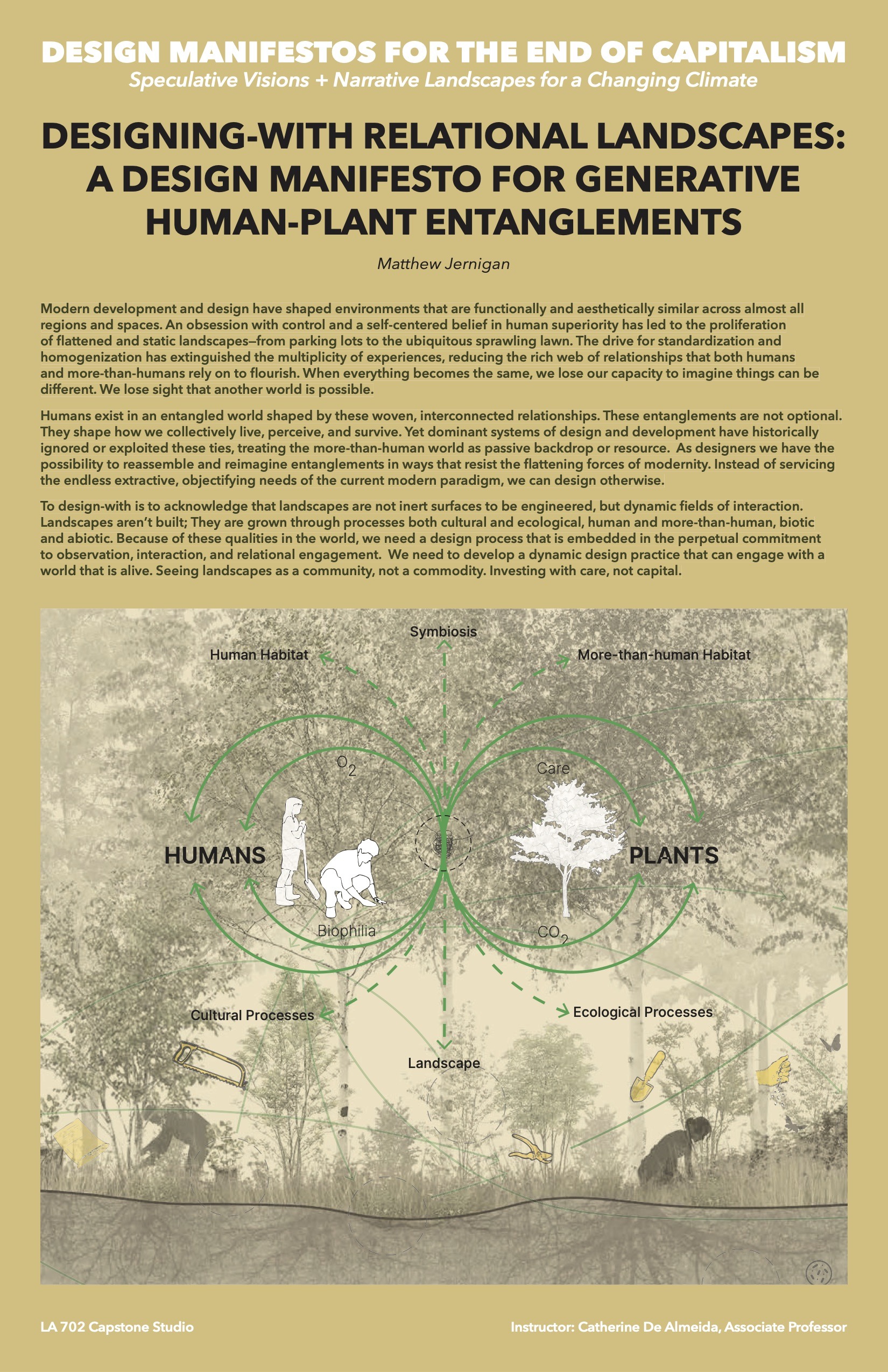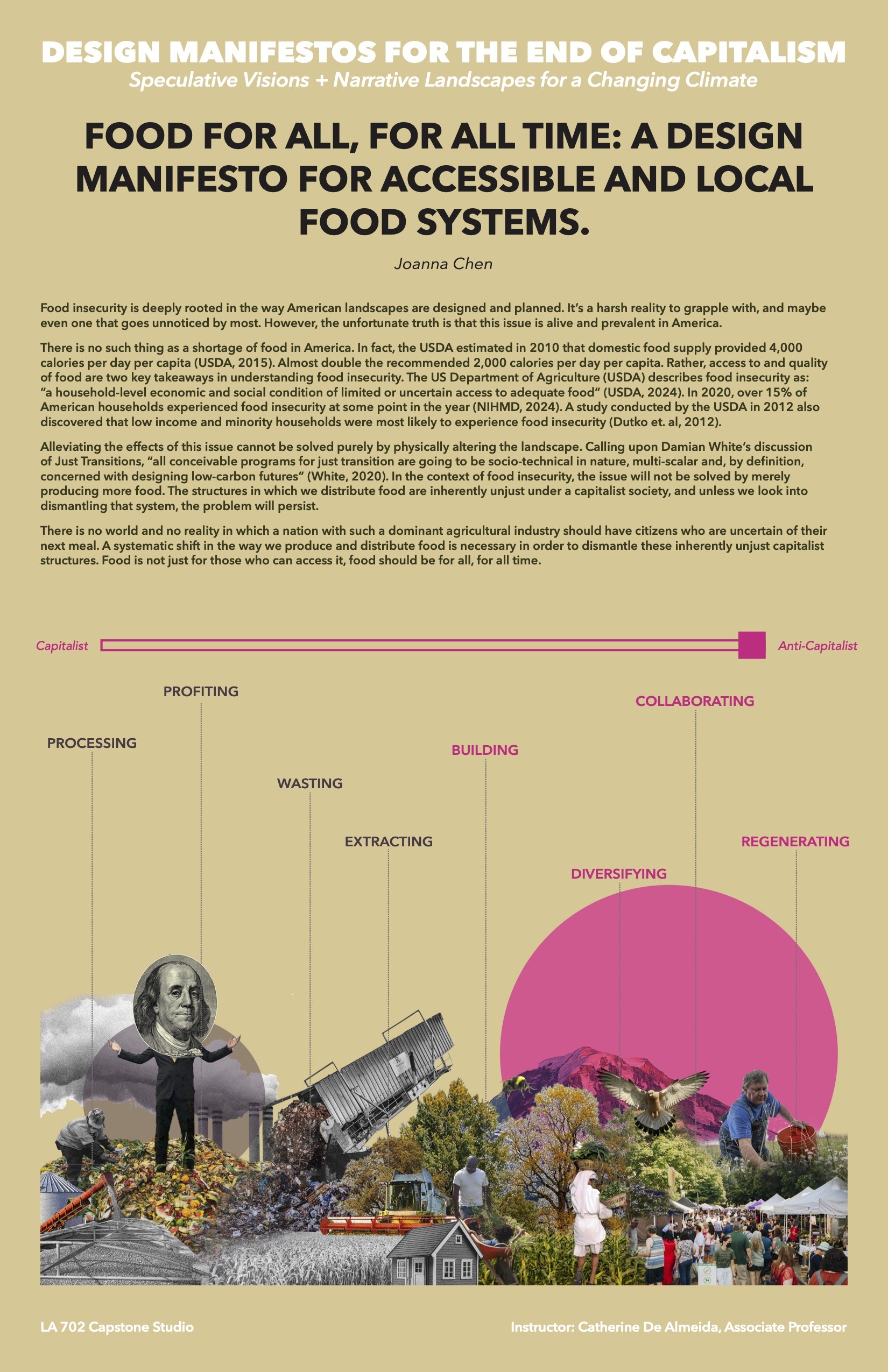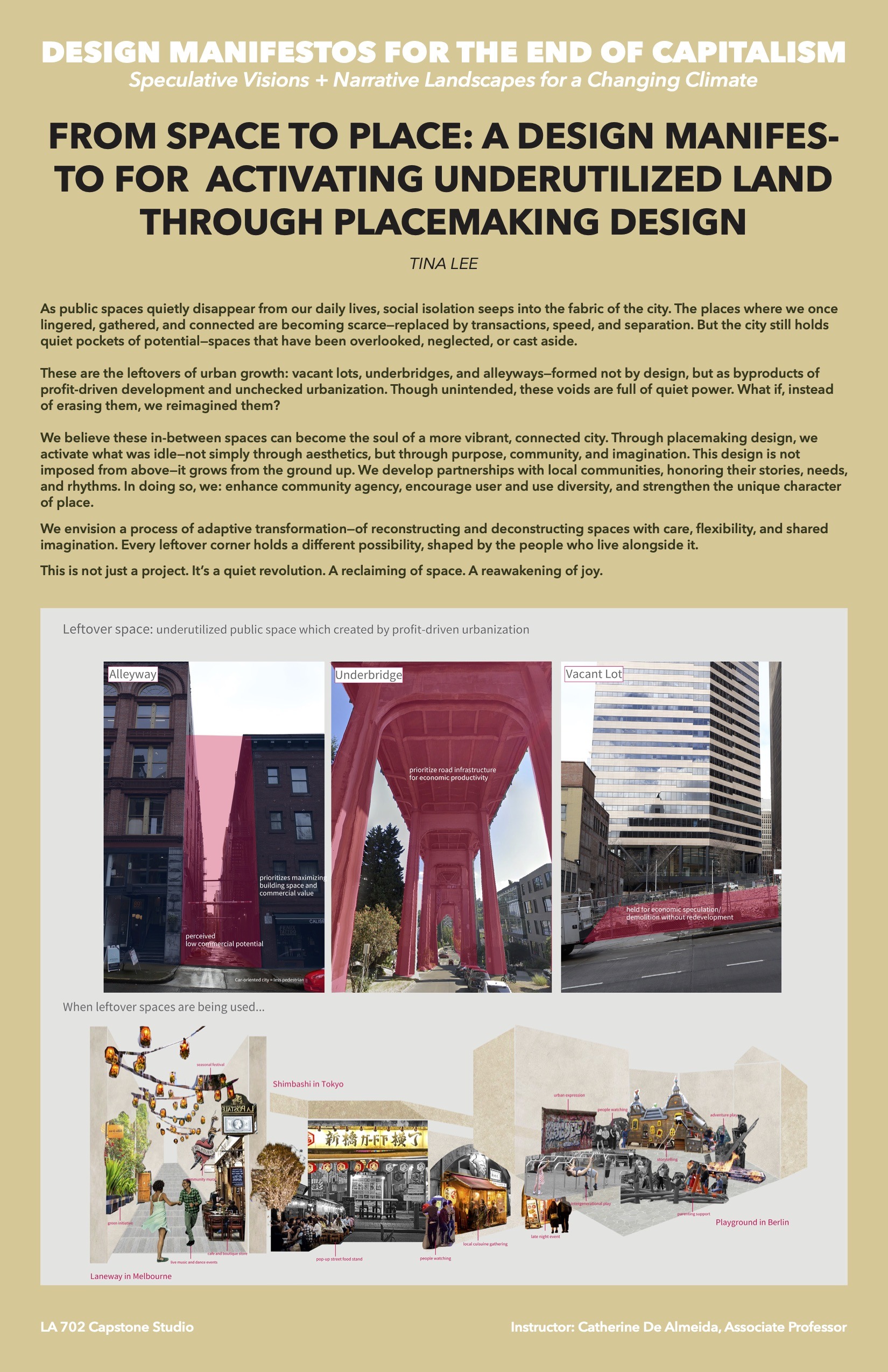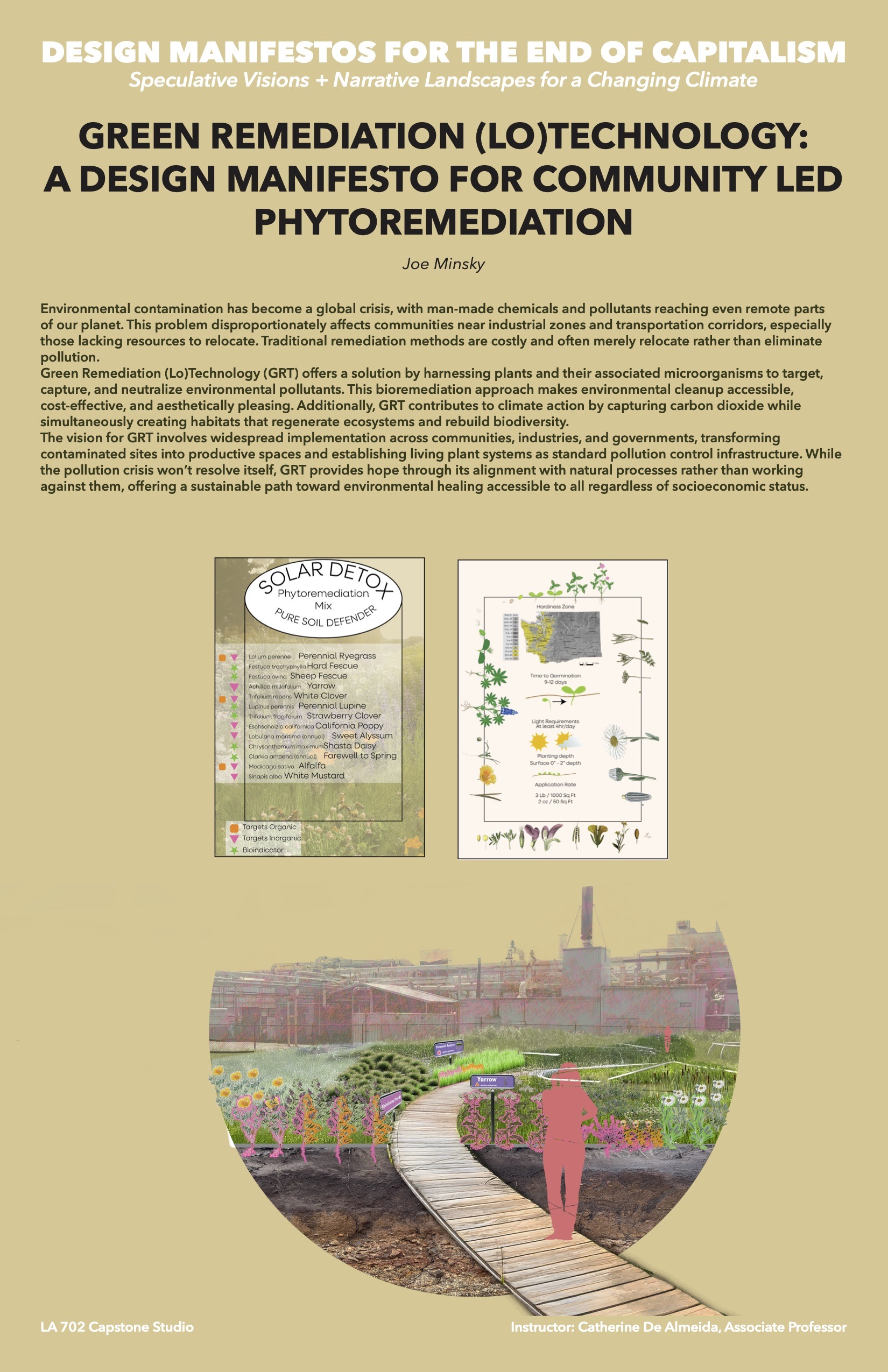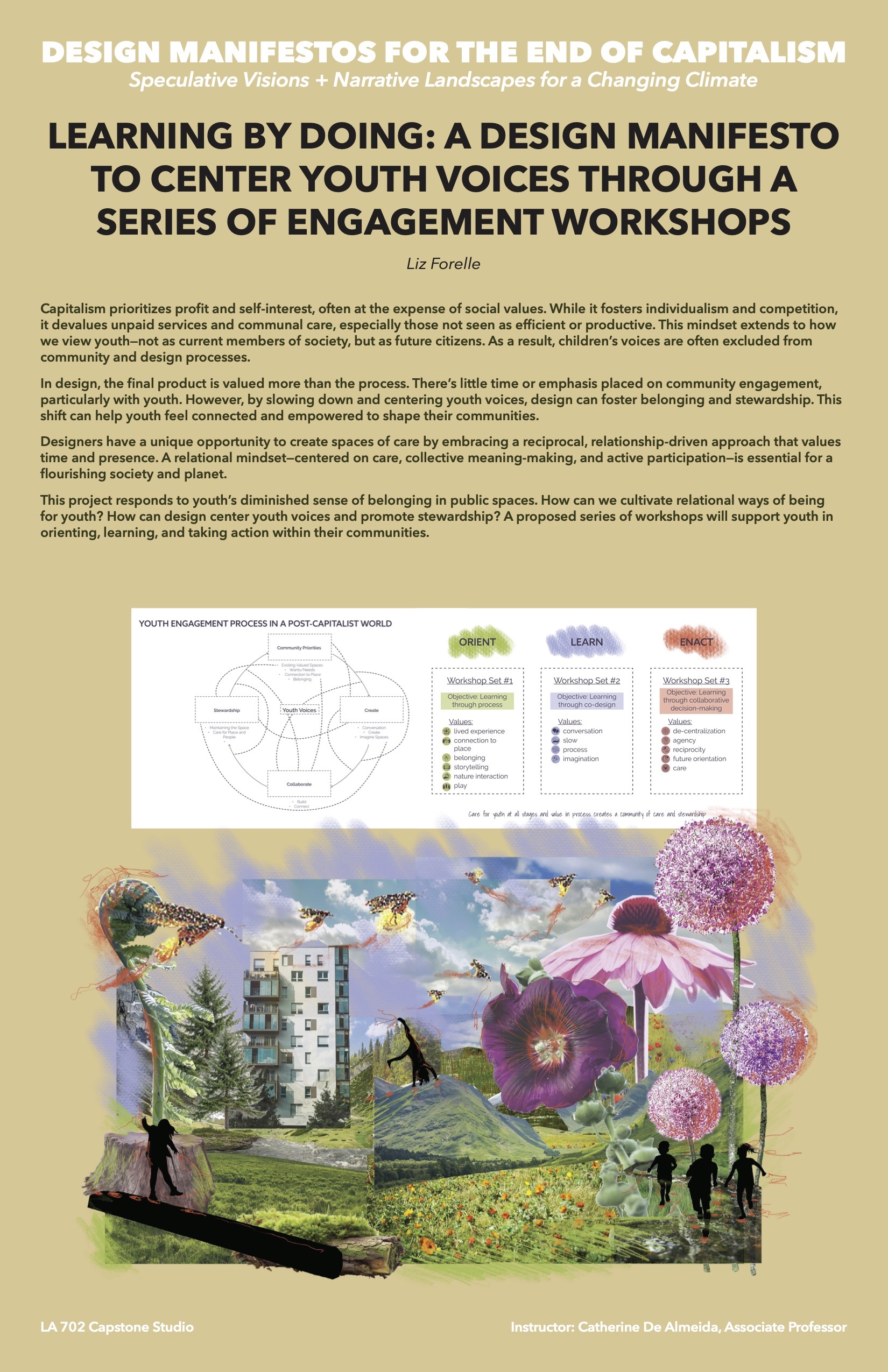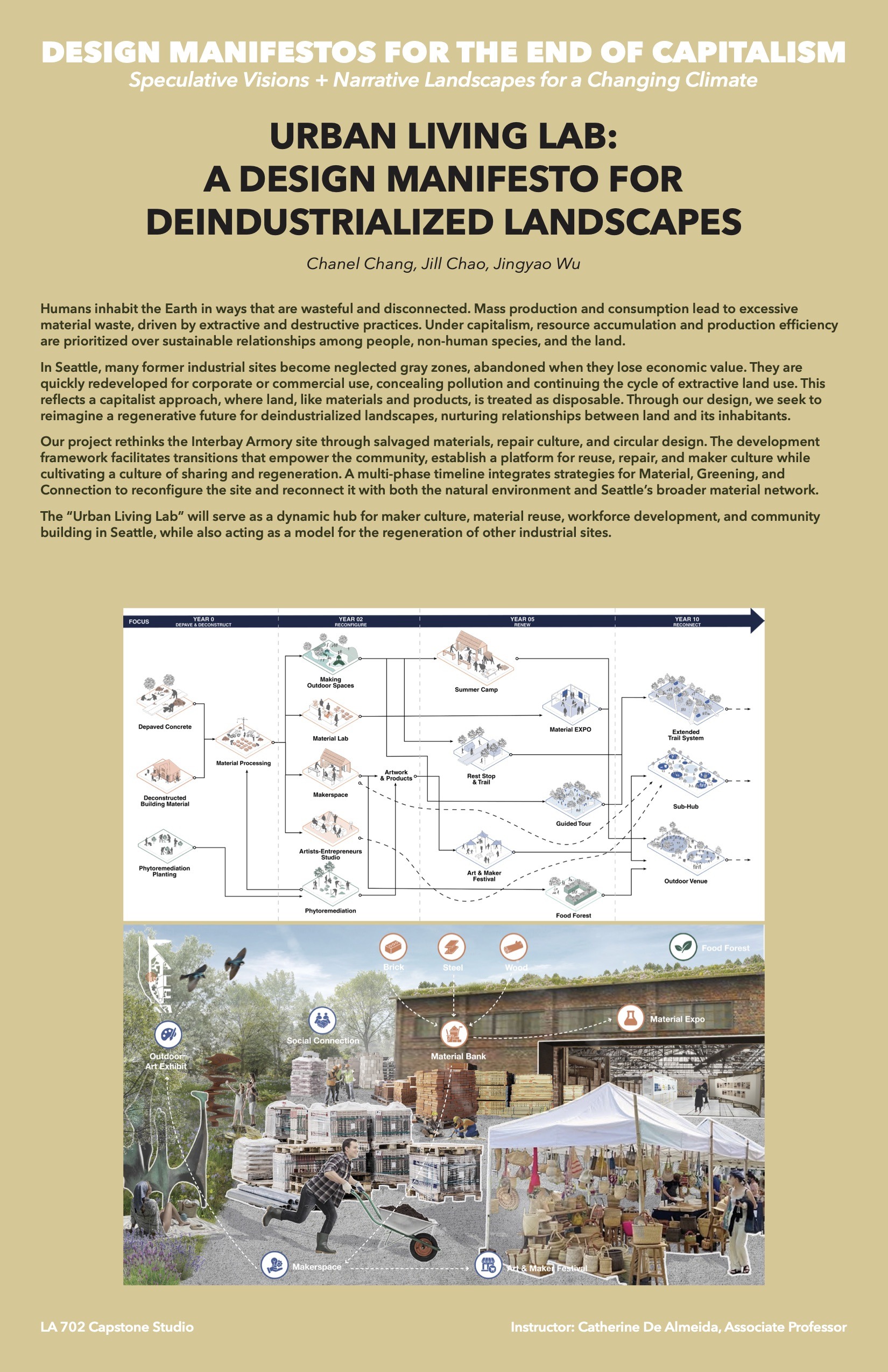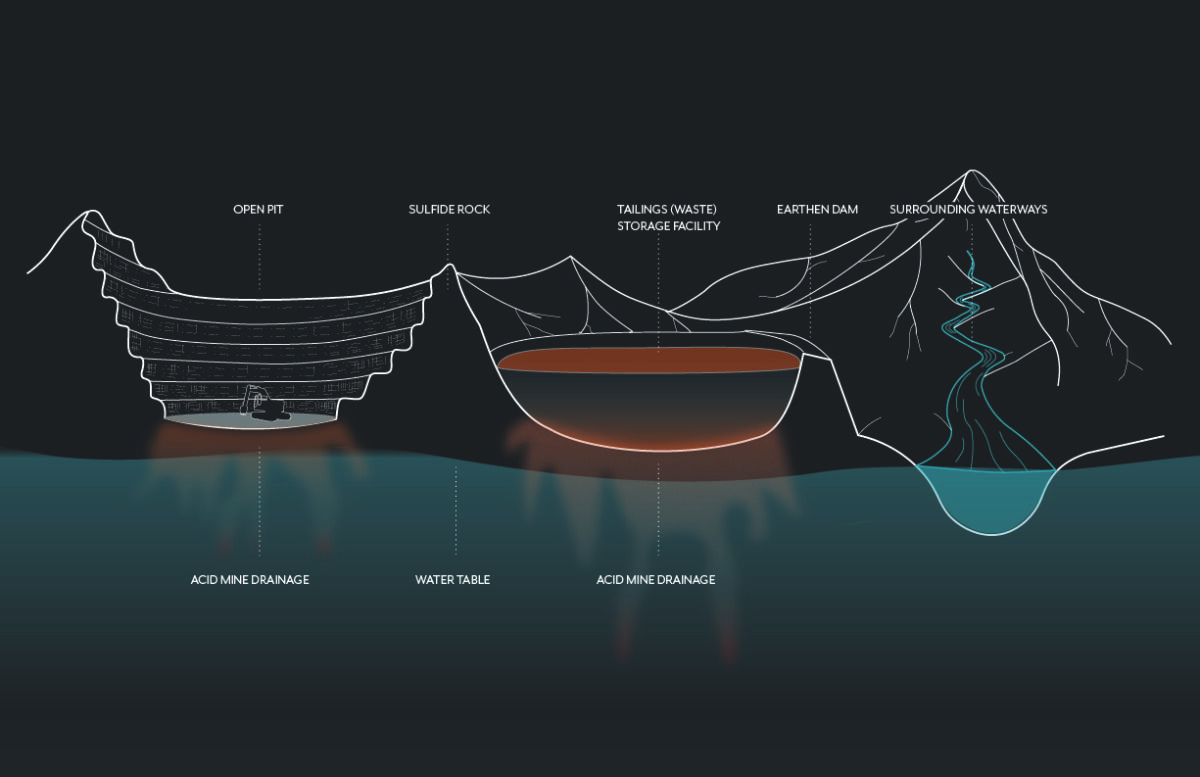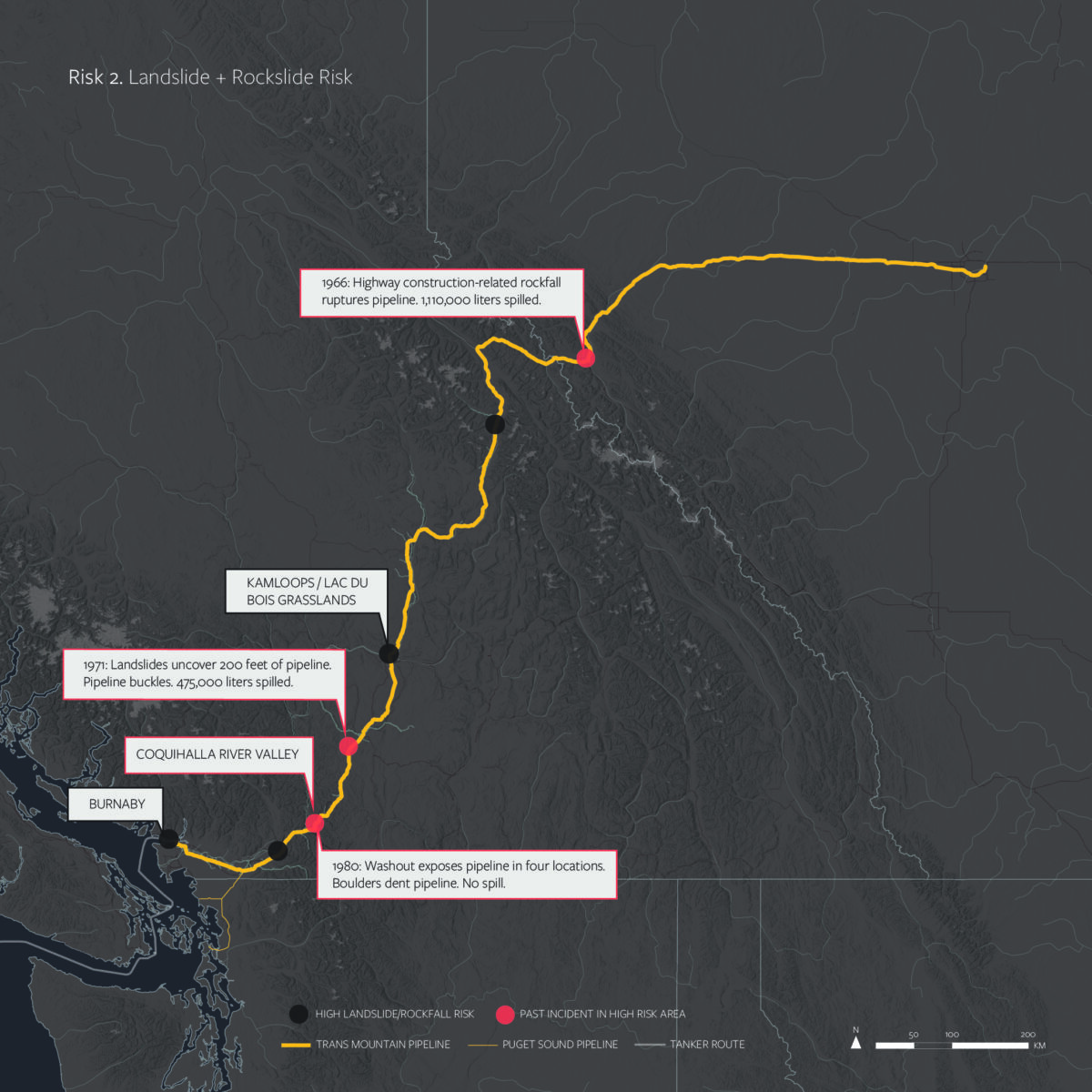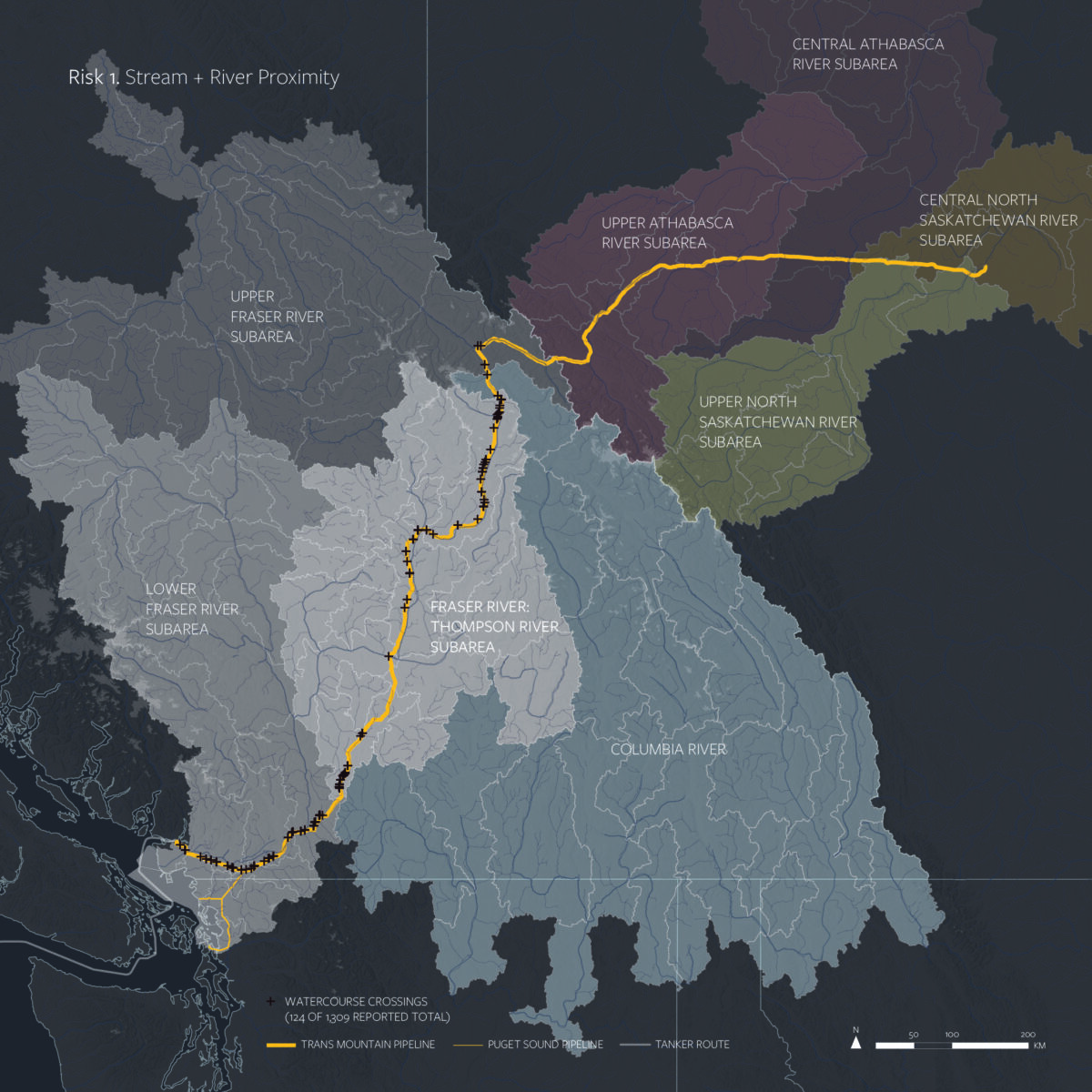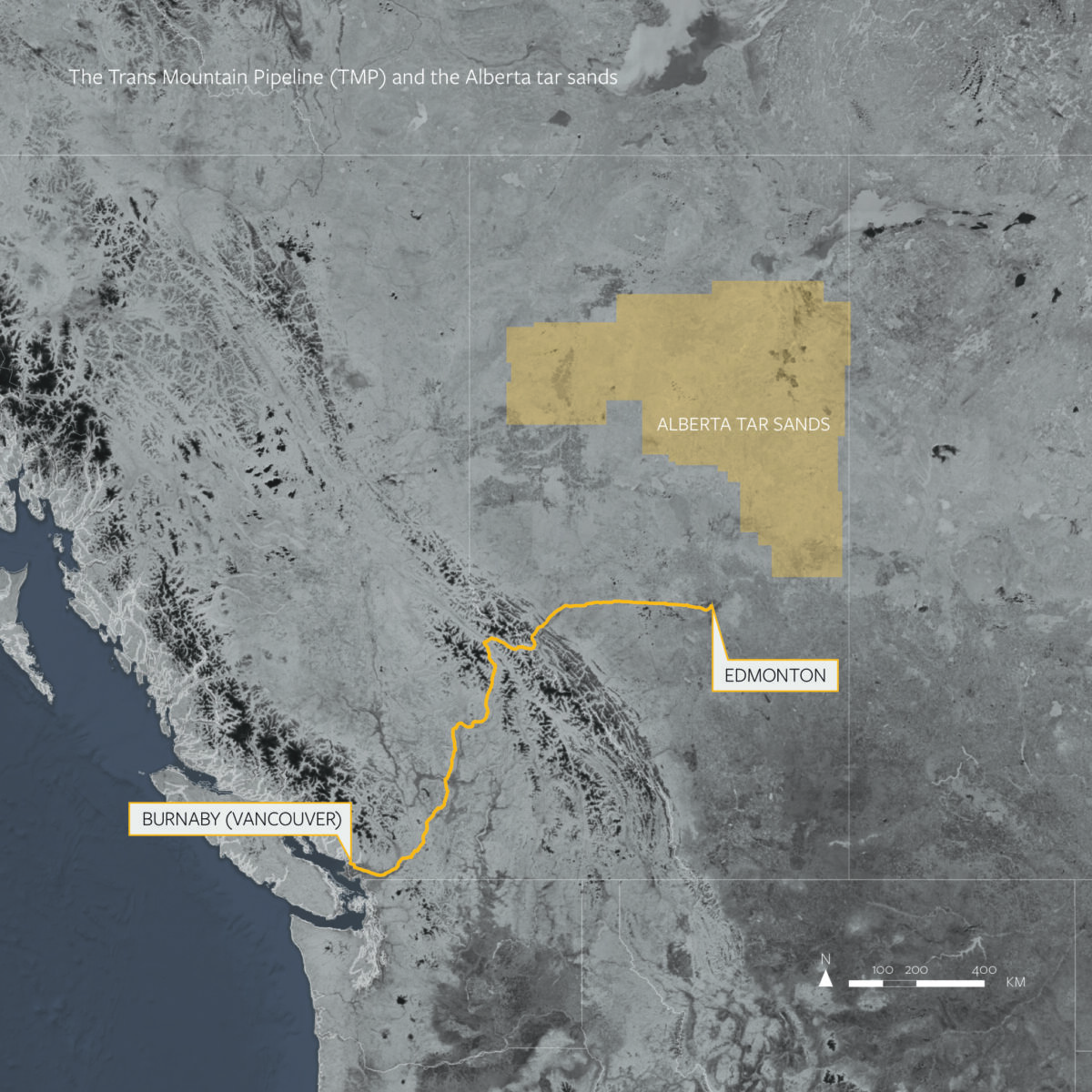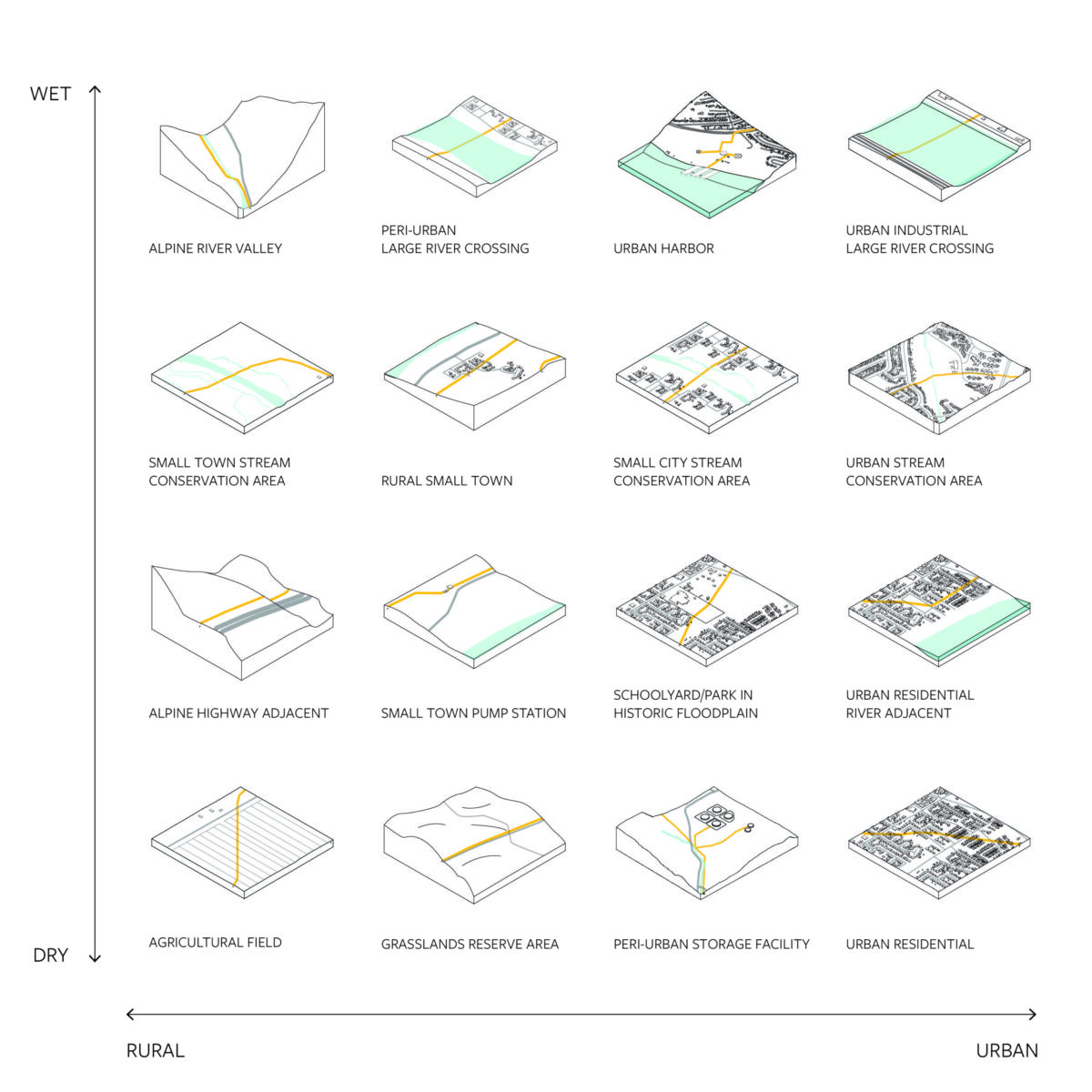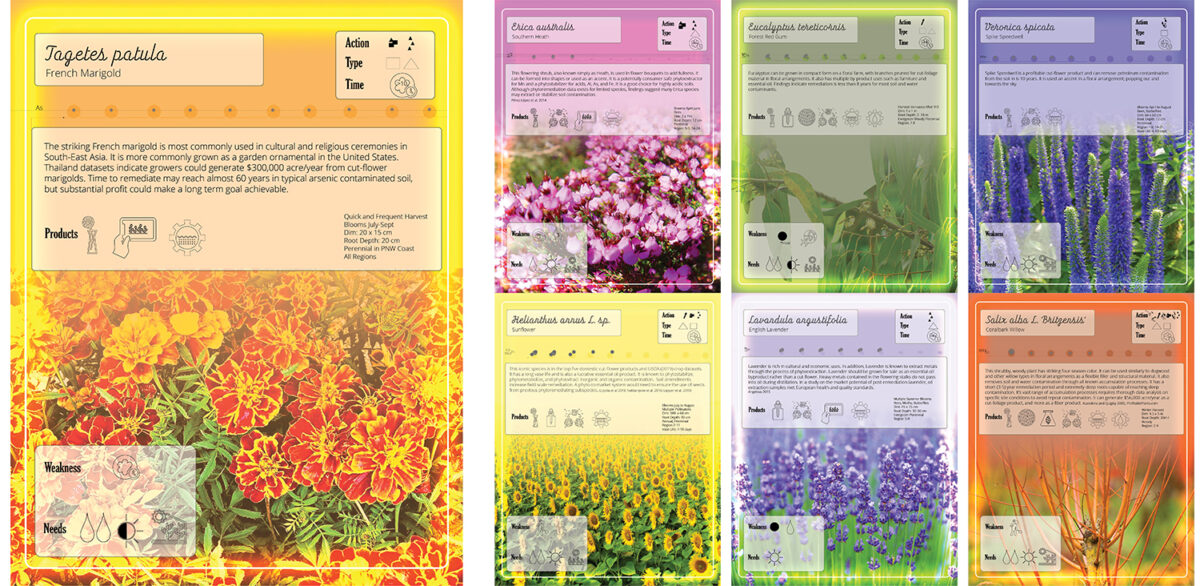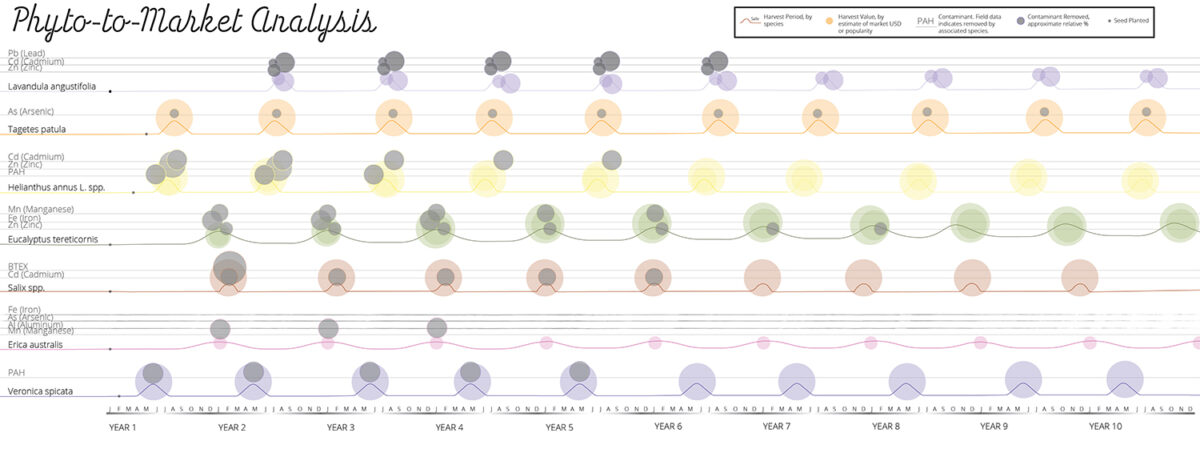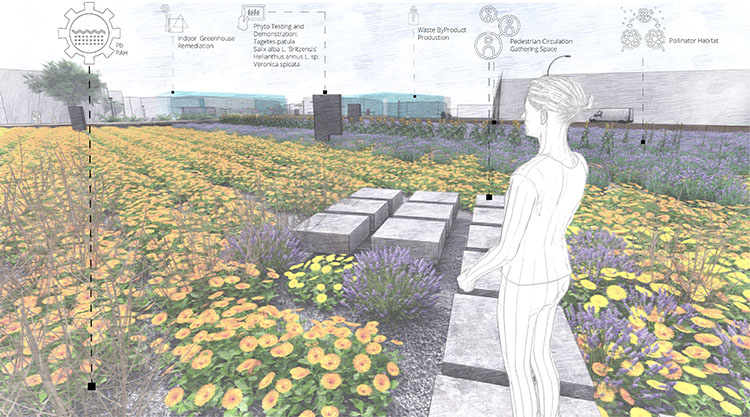“…it is now easier for us to imagine the end of the world than an alternative to capitalism.”
-Anthony Dunne and Fiona Raby, Speculative Everything, p. 2.
It is somehow easier to imagine the dystopian destruction of the physical world than the restructuring of socio-political and economic systems that determine the physical, structural, aesthetic, and operational outcomes of built environments. This is our starting point: challenge accepted.
Learning from utopian visions from the 20th century, the work of science-fiction writers, notably Octavia Butler, and examples of manifestos by designers put forth over the last decade, students will develop their own design manifestos not for the end of the world, but for the end of capitalism as we transition to a decarbonized future.
Please find the attached studio project description as well as individual project descriptions to learn more about the 2025 MLA Capstone Studio
DESIGN MANIFESTOS FOR THE END OF CAPITALISM
Speculative Visions + Narrative Landscapes for a Changing Climate
Project Descriptions
Image Credit: WAI Architecture Think Tank (Cruz Garcia and Nathalie Frankowski), Cities of the Avant-Garde, 2011/2020.
The floral industry is at once global and personal. Although ephemeral and impractical, humans have smiled at a simple gift of a cut-flower for thousands of years and spent countless hours cultivating and cherishing the color and form of this essential plant part. Regional floriculture in the western United States is robust, with floral farms all along the west coast, yet the US still imports over 75% of cut-flowers from South America. This contributes to global carbon emissions and landscape contamination. Local-based solutions can reduce environmental impact, provide an experience of place, and connect consumers to local flora. Many flowering plants possess the ability to filter pollutants out of contaminated soil (phytoremediation), and there are a possible few that could continue their lives as cut-flowers or waste by-products. Urban farmers faced with contaminated urban soil may find a solution in this industrial, ecological proposal.


This landscape architecture design research thesis proposes suitable floral species for a “phyto-to-market system” and an urban floral farm and phytoremediation demonstration garden. This design is situated within an existing industrial “Flower District” network in Seattle’s Georgetown neighborhood. If implemented, it could be a testing bed for phytoremediation, provide a new relationship to bouquets, provide safer routes for pedestrians between the park and bus routes, and provide an opportunity for urban farmers to remediate their soil while making a profit at the local farmers market. I invite you to learn more about my project in this PDF presentation or in the linked two-minute video walk through.
Read more about Elizabeth’s work at ourfutureenvironment.org.
